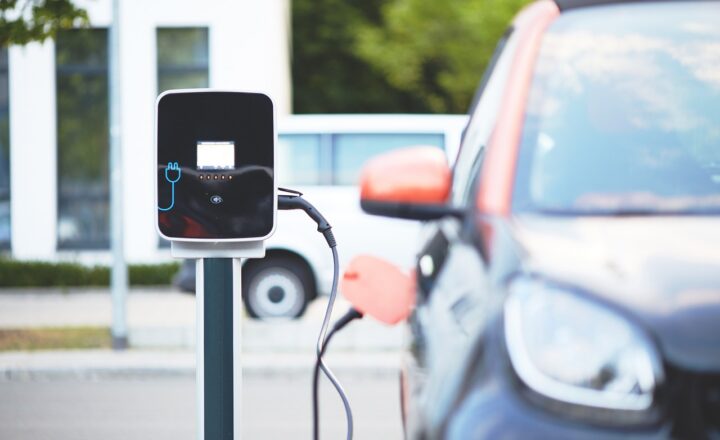
Electric vehicles (EVs) are rapidly becoming a staple of modern transportation, offering benefits like reduced emissions, lower running costs, and innovative technology. However, their benefits extend far beyond personal use; EVs could play a crucial role in emergency response and disaster relief efforts. As climate change increases the frequency and severity of natural disasters, the need for efficient, sustainable emergency solutions has never been greater. This article explores the myriad ways that electric vehicles can enhance emergency response and disaster relief efforts, addressing accessibility, logistics, and sustainability.
1. The Growing Importance of Emergency Preparedness
With an increase in extreme weather events such as hurricanes, wildfires, and flooding, emergency preparedness has become a critical aspect of public safety. EVs represent a shift in how we can respond to emergencies efficiently and effectively. Their unique capabilities can help organizations respond to crises, ensuring that resources reach those in need quickly. Additionally, many EVs come equipped with advanced technologies that provide real-time data, improving decision-making during emergencies.
Key Features of EVs for Emergency Preparedness:
– Telematics and Connectivity: Most modern EVs are equipped with telematics systems that allow for tracking, diagnostics, and communication, ensuring help is on the way and resources are deployed efficiently.
– Low Noise Signature: EVs produce significantly less noise than traditional vehicles, making them suitable for covert operations in sensitive environments.
– Adaptability: EVs can be repurposed for various applications, such as mobile command centers, emergency shelters, or medical supply transport, enhancing flexibility in emergency situations.
2. EVs and Emergency Response Teams
Emergency response teams face the challenge of navigating difficult terrain and environmental conditions while ensuring the safety of their personnel. EVs, particularly those designed for all-terrain capabilities, provide several advantages in this context:
– Access to Remote Areas: Many EVs are equipped with enhanced all-wheel-drive systems, allowing them to navigate rough terrains that may hinder traditional vehicles, especially during disasters where infrastructure is compromised.
– Cost Efficiency: The lower operating costs of EVs due to reduced fuel costs can enable emergency response teams to allocate more resources to other critical needs during disaster situations.
– Rapid Deployment: EVs can be deployed quickly and efficiently, reducing response times when every second matters in saving lives and providing essential support.
Real-World Examples:
Numerous organizations have begun to integrate EVs into their emergency response plans. For instance, technology companies are developing mobile charging stations for EVs that can be quickly dispatched to disaster-stricken areas, ensuring that emergency vehicles remain operational.
3. EVs in Disaster Relief Logistics
In the aftermath of a disaster, logistics and supply chain management are vital to deliver essential supplies such as food, water, medical aid, and blankets. EVs offer unique advantages in disaster relief logistics:
– Efficient Transportation of Supplies: With their capacity for payload and accessible design, EVs can safely transport a range of necessary supplies to remote or affected areas following a disaster.
– Reduction of Carbon Footprint: Using EVs reduces the overall carbon emissions in disaster relief efforts, contributing to a more sustainable approach as communities work towards recovery.
– Integration with Renewable Energy: EVs can be charged via solar panels or other renewable energy sources, making them particularly valuable during disasters when conventional power sources may be compromised.
Case Studies:
Organizations like the Red Cross are integrating EVs into their fleet to improve disaster response and supply delivery efficiency, showcasing the tangible benefits of this technology in real-world situations.
4. Charging Infrastructure and Resilience
A robust charging infrastructure is essential for the successful deployment of EVs during emergencies. As municipalities implement strategies to improve EV charging networks, they also enhance resilience for disaster response:
– Strategic Placement of Charging Stations: Positioning charging stations in strategic locations can ensure easy access during emergencies, allowing EVs to recharge quickly and maintain operational readiness.
– Mobile Charging Units: Portable charging options can be deployed alongside emergency services, ensuring that response teams can recharge amidst crises.
– Partnerships with Local Businesses: Collaborating with local businesses can enhance charging access points while supporting community resilience and recovery efforts during disasters.
This investment in charging infrastructure strengthens community preparedness, ensuring that both personal and emergency EVs can mobilize quickly when needed most.
5. Training and Awareness for Effective Integration
Integrating EVs into emergency response systems requires comprehensive training and public awareness efforts:
– Training First Responders: First responders need specialized training to manage the unique aspects of EV technology, such as battery management and navigating electric systems.
– Community Awareness Programs: Increasing public knowledge about EV capabilities and their importance in disaster response can foster community engagement and preparedness.
– Simulating Disaster Scenarios: Conducting drills that incorporate EVs into disaster response scenarios can prepare teams and communities to swiftly deploy these vehicles during real incidents.
By focusing on education and training, agencies can effectively utilize EVs as integral members of emergency response and disaster relief teams.
Conclusion
Electric vehicles are poised to revolutionize emergency response and disaster relief efforts. Their advantages—including efficient transportation, cost-effectiveness, sustainable operations, and the ability to access remote areas—make them an ideal choice for organizations striving to optimize response capabilities. As climate change continues to present unprecedented challenges, prioritizing the integration of EVs into emergency response systems may very well reshape how communities prepare for, respond to, and recover from disasters.
Governments, NGOs, and private entities must work together to invest in EV infrastructure, training, awareness, and technological advancement to fully harness the potential of electric vehicles. By doing so, we can build a more resilient future, equipped to face the challenges of natural disasters with agility and sustainability.





